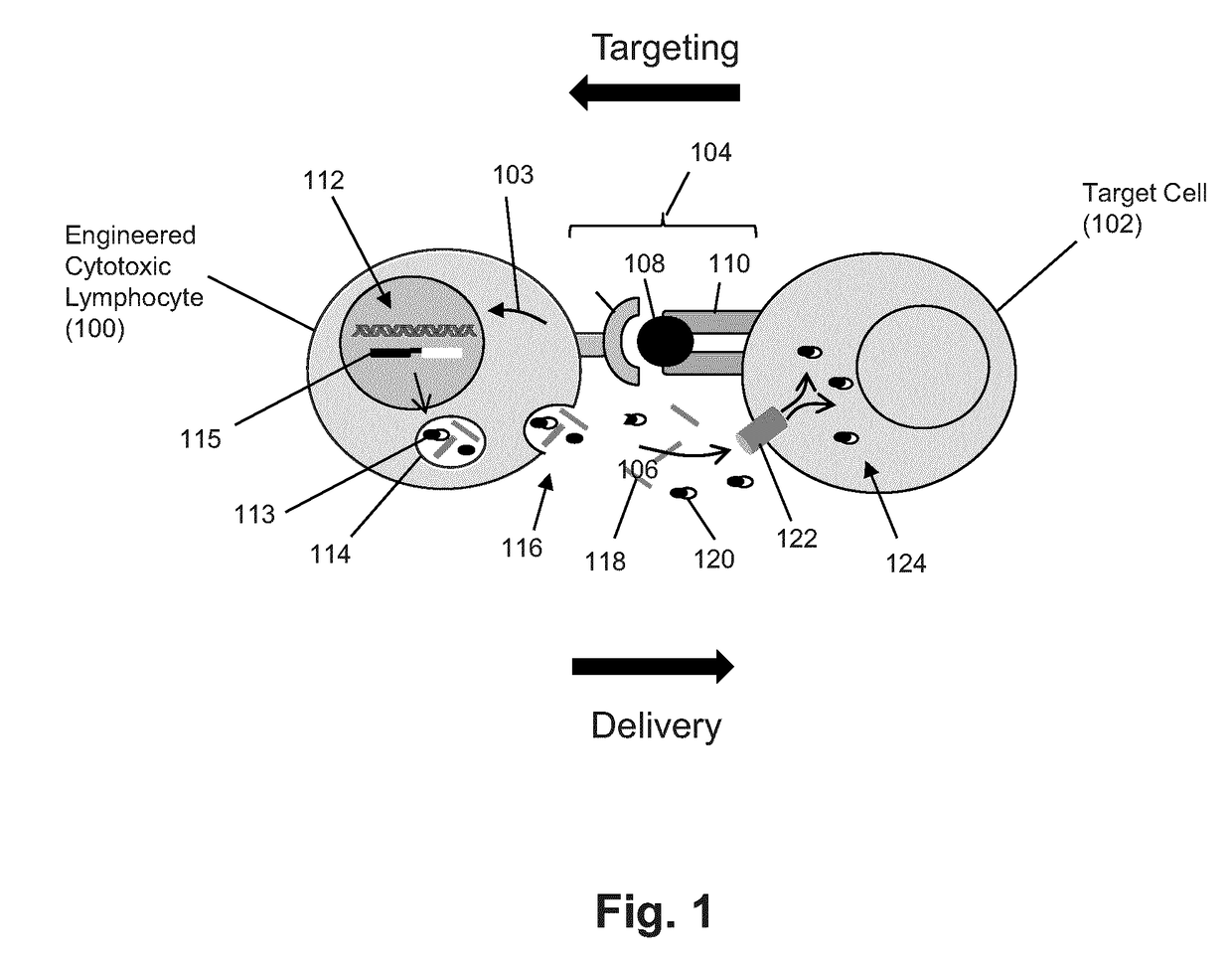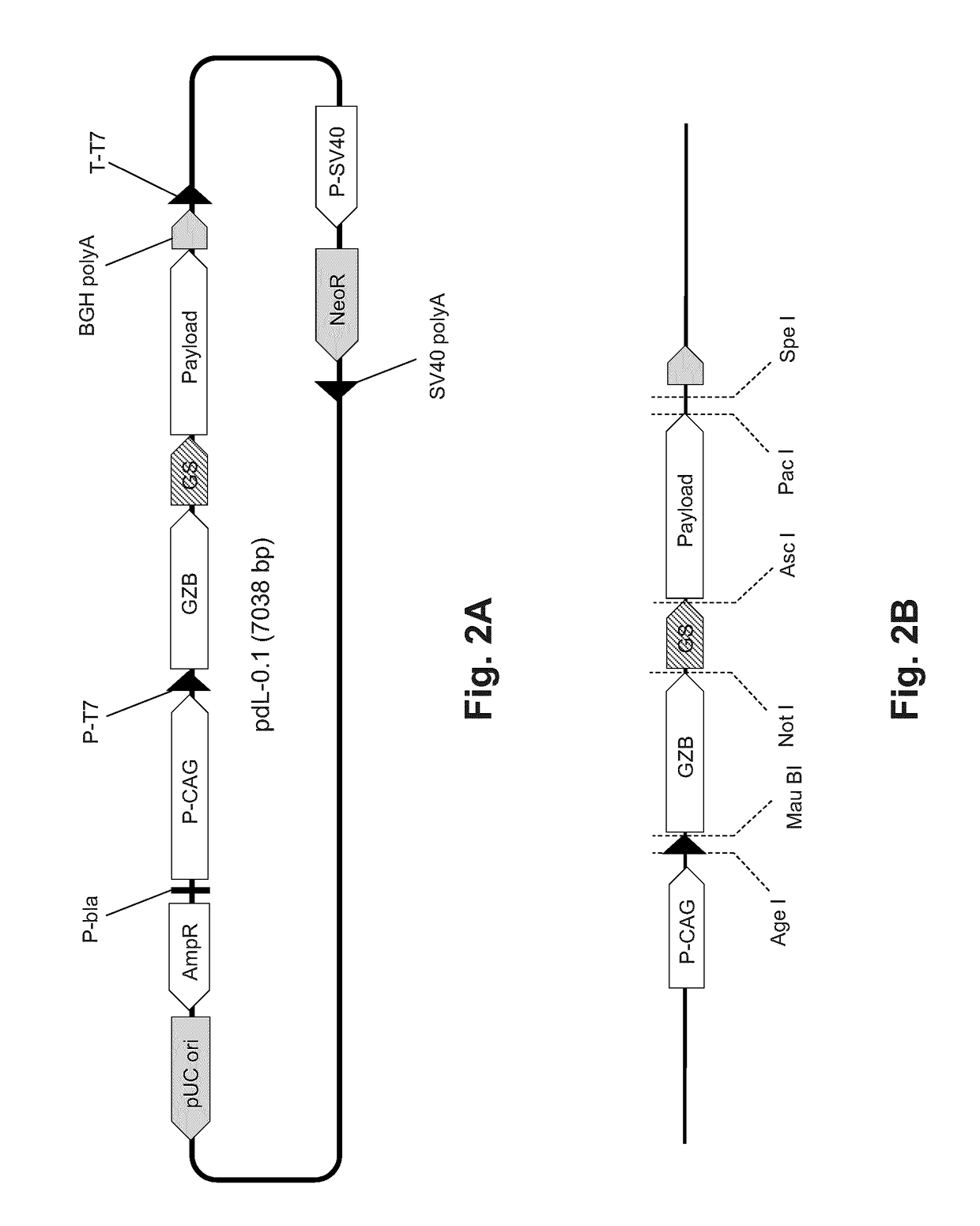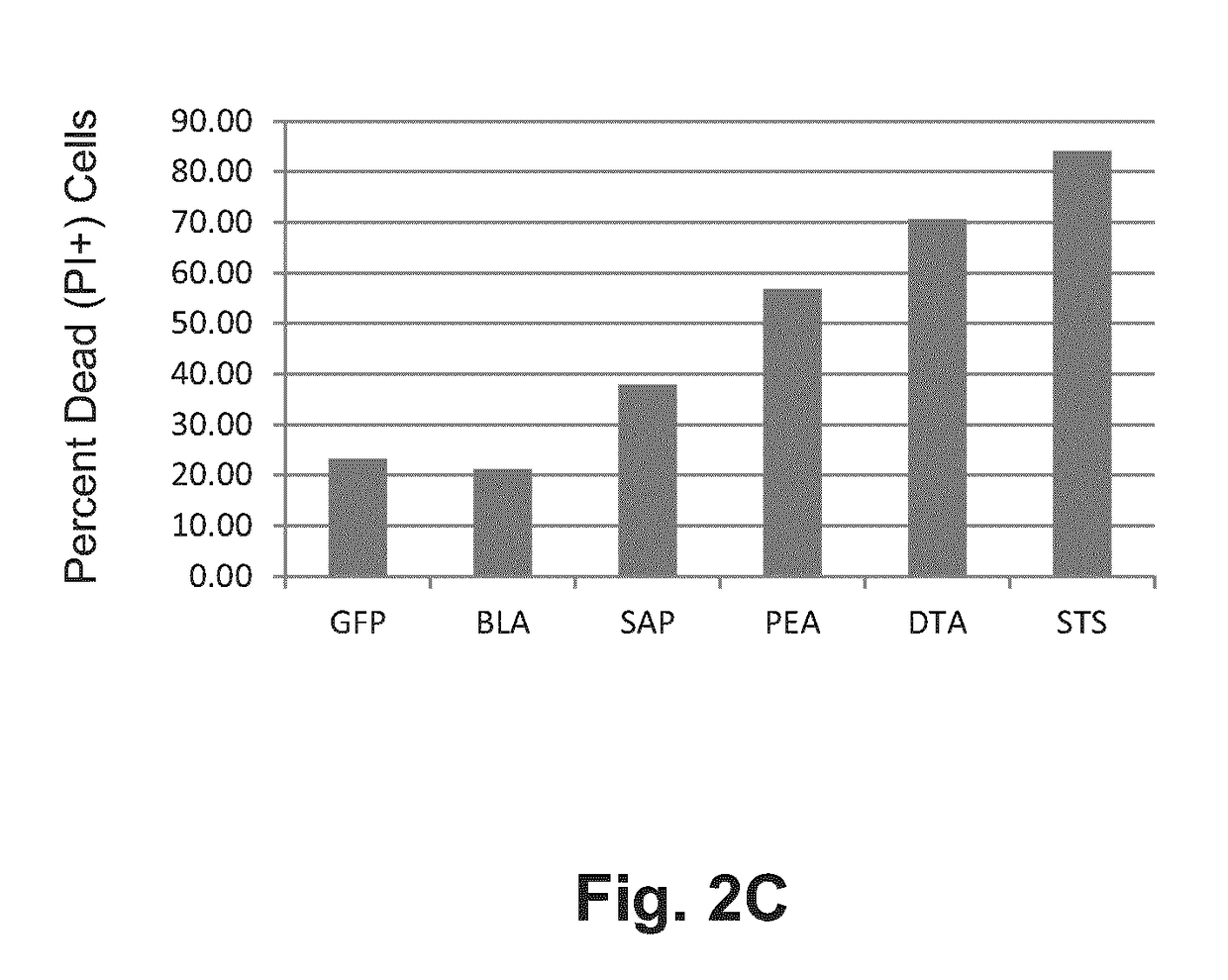Lymphocyte mediated delivery of proteins
- Summary
- Abstract
- Description
- Claims
- Application Information
AI Technical Summary
Benefits of technology
Problems solved by technology
Method used
Image
Examples
example 1
Functional Validation of Granzyme Fusion Proteins
[0075]HeLa cells were transfected using Lipofectamine LTX and PLUS reagent (Life Technologies) with pdL plasmids (constructs shown diagrammatically in FIGS. 2A and 2B) expressing green fluorescent protein (GFP), GzB-BLA (β-lactamase, a reporter), GzB-SAP (Saporin, a plant toxin), GzB-PEA (pseudomonas exotoxin A, a bacterial toxin) and GzB-DTA (diphtheria toxin fragment A, a bacterial toxin), and incubated for 48 h. FIG. 2B shows the locations of restriction endonuclease recognition sites used in assembling elements of the vector. Exemplary nucleotide sequences encoding GzB-DTA and GzB-SAP are provided as SEQ ID NO: 1 and SEQ ID: 2, respectively. Positive and negative controls consisted of 24 h treatment with 1 uM staurosporine (a small molecule kinase inhibitor, STS) and vehicle only respectively. Cells were trypsinized, stained with propidium iodide (PI), and dead (PI+) cells quantified by flow cytometry. These values were corrected ...
example 2
[0077]Vectors for Production and Transfer of Granzyme B Fusion Proteins to Target Cells
[0078]A modular polycistronic viral vector has been designed for modifying NK cells based on a third generation self-inactivating lentiviral vector (300), as illustrated in FIG. 3, and as disclosed in Okita et al, Nature Protocols, 5: 418-28 (2010), which is incorporated herein by reference. MND promoter (302) drives robust expression of a four-component polyprotein across a variety of tissues. Each component P1 (304), P2 (308), P3 (310, 312, 314), and P4 (316) is separated by an orthogonal 2A sequence (306) that self-cleaves upon folding to release each individual protein. In some embodiments, P1 (304) may be used to encode a chimeric antigen receptor, while the P2 (308) “utility” position may be used for additional cell modifications, such as expression of mutant EF2 to protect host cells from deleterious effects of a payload protein, e.g. diphtheria toxin (DTA) toxicity. P3 (310, 312, 314) cons...
example 3
Transduction of NK Cells and Production and Transfer of Granzyme B Fusion Proteins to Target Cells
[0080]In this example GzB-tdTomato fusion proteins from NK cells were transferred to target K562 cells. NK cells were electroporated with a plasmid encoding a GzB-tdTomato (GzB-tdT) fusion protein, and then enriched for fusion protein expressing cells (dL-tdTs) via FACS sorting of tdT+NK cells. These dL-tdTs were co-cultured with CFSE labeled K562s at a 4:1 effector:target ratio for 4 hours, and then analyzed on a flow cytometer(402 in FIG. 4). The presence of the CFSE+tdT+K562 population (enclosed in black box (404) on the right panel), and the absence of this population in the untransfected NK / K562 co-culture (shown in left pane(400)), indicates successful transfer of the tdT payload from NK cell to target K562 cell.
PUM
| Property | Measurement | Unit |
|---|---|---|
| Therapeutic | aaaaa | aaaaa |
| Cytotoxicity | aaaaa | aaaaa |
Abstract
Description
Claims
Application Information
 Login to view more
Login to view more - R&D Engineer
- R&D Manager
- IP Professional
- Industry Leading Data Capabilities
- Powerful AI technology
- Patent DNA Extraction
Browse by: Latest US Patents, China's latest patents, Technical Efficacy Thesaurus, Application Domain, Technology Topic.
© 2024 PatSnap. All rights reserved.Legal|Privacy policy|Modern Slavery Act Transparency Statement|Sitemap



